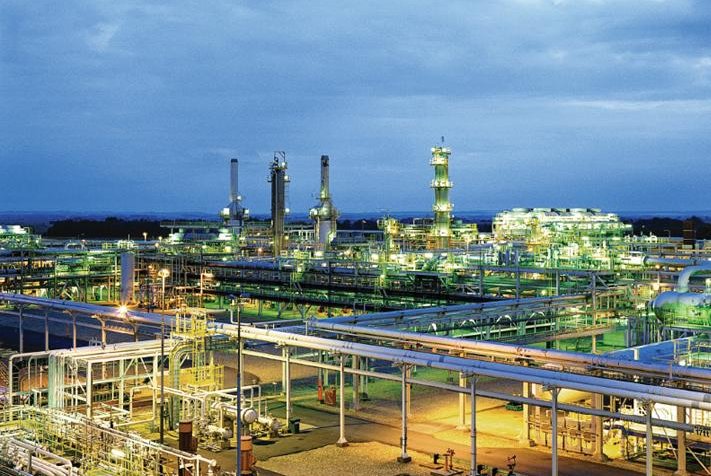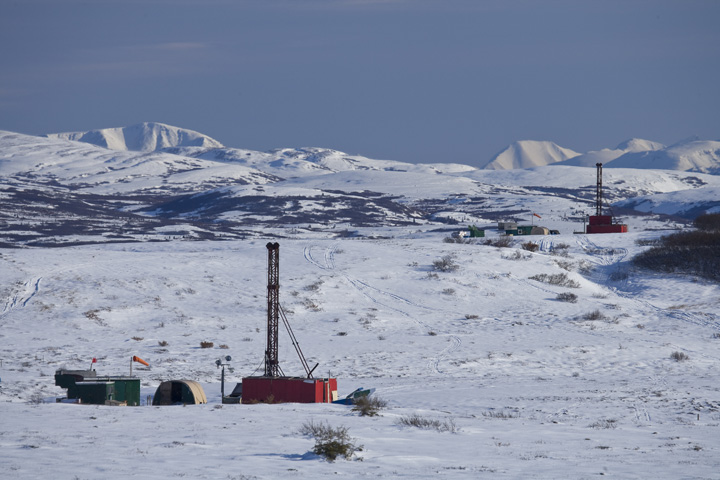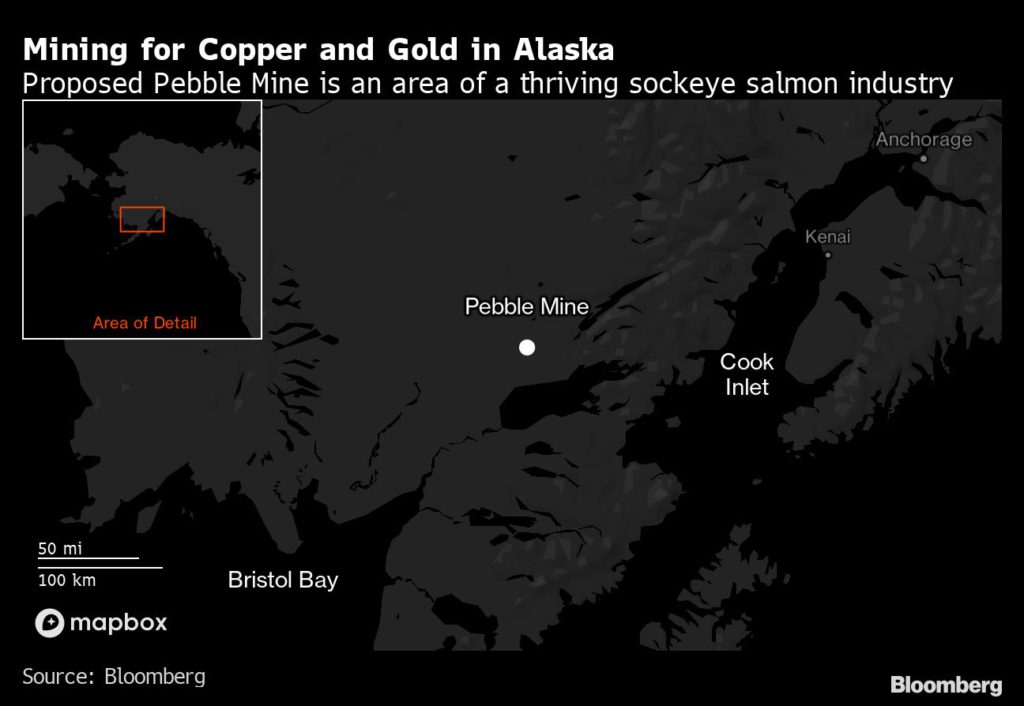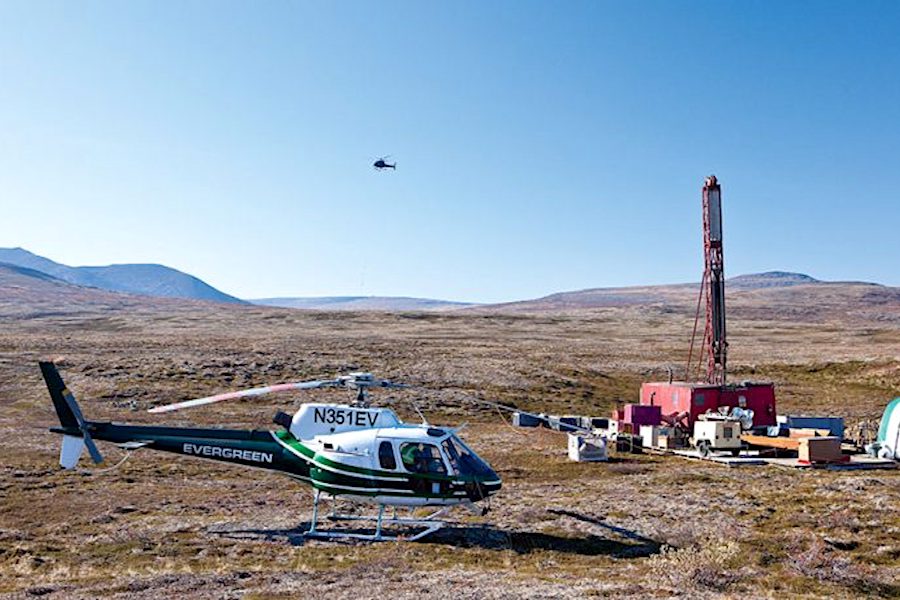Activists Attempt To Derail An $8 Billion Alaskan Oil Project
Environmental activists are bracing for one last push to try and cancel the Willow oil project in Alaska, which they have slammed as a “carbon bomb”.
The project, led by ConocoPhillips, was awarded to the company by the Trump Administration’s Bureau of Land Management in 2020. The project could deliver 160,000 bpd of crude, the BLM said at the time, with reserves estimated at between 400 and 750 million barrels. The lifetime of the project was estimated at up to 30 years in 2019.
Earlier this week, Bloomberg reported that President Biden could approve the $8-billion project with a reduced number of wells, which sparked concern among activists and they are now preparing for battle.
According to a new Bloomberg report, this time they are using a new tactic that involves a focus on efforts to push for approval for the project at a reduced scale that would render it uneconomical rather than trying to stop its approval altogether.
The latest official input from the federal government came this week in the form of a report published by the Bureau of Land Management, which features a suggestion that four drill sites would be better than five, and another one should be deferred pending additional environmental impact analysis.
According to the BLM, fewer drilling sites would reduce the risk for local ecosystems, reduce freshwater consumption by the project, and reduce the total length of pipelines related to the project.
The Willow project has been seen as a fine balancing act for the Biden administration as it seeks the middle ground between its emission reduction ambitions and the immediate need for hydrocarbons to secure the country's energy supply.
The final decision on Willow is scheduled to be made in a month and the BLM has indicated an approval is not certain at all.
By Charles Kennedy for Oilprice.com
By BECKY BOHRER and MATTHEW DALY

This 2019 aerial photo provided by ConocoPhillips shows an exploratory drilling camp at the proposed site of the Willow oil project on Alaska's North Slope. The Biden administration issued a long-awaited study on Wednesday, Feb. 1, 2023, that recommends allowing three oil drilling sites in the region of far northern Alaska. The move, while not final, has angered environmentalists who see it as a betrayal of President Joe Biden's pledges to reduce carbon emissions and promote green energy.
JUNEAU, Alaska (AP) — The Biden administration released a long-awaited study Wednesday that recommends allowing a major oil development on Alaska’s North Slope that supporters say could boost U.S. energy security but that climate activists decry as a “carbon bomb.”
The move — while not final — drew immediate anger from environmentalists who saw it as a betrayal of the president’s pledges to reduce carbon emissions and promote clean energy sources.
ConocoPhillips Alaska had proposed five drilling sites as part of its Willow project, and the approach listed as the preferred alternative by the U.S. Bureau of Land Management in the report calls for up to three drill sites initially. Even as the land agency released its report, the U.S. Interior Department said in a separate statement that it has “substantial concerns” about the project and the report’s preferred alternative, “including direct and indirect greenhouse gas emissions and impacts to wildlife and Alaska Native subsistence.”
The Bureau of Land Management, which falls under the Interior Department, also said in the report that identifying a preferred alternative “does not constitute a commitment or decision” and notes it could select a different alternative in the final decision.
Opponents have raised concerns about the impacts of oil development on wildlife, such as caribou, and efforts to address climate change.
The project is in the National Petroleum Reserve-Alaska, a vast region roughly the size of Indiana on Alaska’s resource-rich North Slope. ConocoPhillips Alaska says the project, at its peak, could produce an estimated 180,000 barrels of oil a day.
The Arctic Slope Regional Corporation, an Alaska Native corporation, and the Iñupiat Community of the Arctic Slope joined the North Slope Borough in praising the proposed alternative and calling on the administration to move ahead on the project. In a joint statement, they said advancing the project “is critical for domestic energy independence, job security for Alaskans and the right of Alaska Natives to choose their own path.”

This Sunday, June 30, 2019, aerial photo released by Earthjustice shows the Alaska's North Slope in the Western Arctic on the edge of Teshekpuk Lake, Alaska.
Other Alaska Native groups have expressed concerns.
Leaders of the Native Village of Nuiqsut and city of Nuiqsut in a recent letter said they do not feel like the Bureau of Land Management is listening. The community is about 36 miles (58 kilometers) from the Willow project, in a remote region of Alaska’s far north.
The Bureau of Land Management’s “engagement with us is consistently focused on how to allow projects to go forward; how to permit the continuous expansion and concentration of oil and gas activity on our traditional lands,” Native Village of Nuiqsut President Eunice Brower and City of Nuiqsut Mayor Rosemary Ahtuangaruak wrote in a letter dated last week.
ConocoPhillips has estimated the project would create as many as 2,000 jobs during construction and 300 permanent jobs and generate between $8 billion and $17 billion in federal, state and local revenue in an area more than 600 miles (965 kilometers) from Anchorage.
Erec Isaacson, the president of ConocoPhillips Alaska, said in a statement the company believes the project will “benefit local communities and enhance American energy security while producing oil in an environmentally and socially responsible manner.” He said the review process “should be concluded without delay.”
The members of Alaska’s congressional delegation — Republican Sens. Lisa Murkowski and Dan Sullivan and Rep. Mary Peltola, a Democrat — all said they welcomed Wednesday’s environmental review and urged the administration to allow the project to move forward.
The project would bring miles of roads and hundreds of miles of pipeline to the area, disrupt animal migration patterns and erode habitat if it goes forward, said Earthjustice, an environmental group.
Jeremy Lieb, an attorney with the group, said Willow is currently the largest proposed oil project in the U.S. He said it is “drastically out of step with the Biden administration’s goals to slash climate pollution and transition to clean energy.” President Joe Biden campaigned on pledges to end new drilling on public lands and has set an ambitious goal to cut greenhouse gas emissions in half by 2030.
Biden “will be remembered for what he did to tackle the climate crisis, and as things stand today, it’s not too late for him to step up and pull the plug on this carbon bomb,” Lieb said.
U.S. Interior Secretary Deb Haaland, who fought the Willow project as a member of Congress, has the final decision on whether to approve it, although top White House climate officials are likely to be involved. Haaland has multiple options, including outright approval or rejection or a middle ground that allows some drilling but blocks other development. A final decision is expected no sooner than early March.
Federal agencies have within the last week made two major decisions around resources in Alaska. Last week, the U.S. Department of Agriculture said it was reinstating restrictions on road-building and logging on the country’s largest national forest in southeast Alaska, the Tongass National Forest.
And on Tuesday, the U.S. Environmental Protection Agency said it was exercising its so-called veto authority under the federal Clean Water Act to block plans for a proposed copper and gold mine in a mineral-rich area of southwest Alaska because of concerns about its environmental impact on a rich Alaska aquatic ecosystem that supports the world’s largest sockeye salmon fishery.
___
Daly reported from Washington, D.C.

ConocoPhillips emphasized its natural gas and liquefied natural gas portfolio in its fourth quarter earnings report. Both are important for a European economy looking to rely less on Russian resources. Photo courtesy of ConocoPhillips.
Feb. 2 (UPI) -- U.S. major ConocoPhillips on Thursday reported fourth quarter profits that were nearly 25% higher than year-go levels, supported in large part by higher commodity prices.
Conoco reported fourth quarter earnings of $3.2 billion, compared with $2.6 billion during the three-month period ending in December 2021. The company attributed much of the earnings to higher volumes and better prices.
The realized price, the price at which Conoco sold its products, came in at $71.05 per barrel of oil equivalent, 8% higher than the same period last year. Full-year revenue of $18.7 billion was supported by a realized price of $79.82 per barrel of oil equivalent, 46% higher than the previous year.
Crude oil prices moved above $100 per barrel last year, supported by supply-side concerns that followed Russia's invasion of Ukraine in February 2022. Russia was a major crude oil and natural gas supplier before Western sanctions limited its output.
Similar to Shell, top brass at Conoco said much of the corporate focus last year was on natural gas and liquefied natural gas, which is replacing some of the market share that Russia has lost.
"Building on 60 years of global LNG expertise, we expanded our LNG business in Australia, Germany, Qatar and along the U.S. Gulf Coast," chairman and CEO Ryan Lance said.
Conoco has a deep LNG bench, but the Sabine Pass and Corpus Christi export terminals in the United States are among the largest in its portfolio. Of the 25 vessels loaded with LNG that left U.S. export terminals during the week ending Jan. 25, nine departed from the Sabine Pass terminal in Louisiana and five left from Corpus Christi.
All told, its production for the fourth quarter was only slightly above year-ago levels, with late-year storms impacting the company's operations in the Lower 48 U.S. states.
Further north, however, the company is among the few to set its sights on Alaska. Despite "substantial" environmental concerns, the government gave its tentative approval to the development of the Willow project, situated on land that Conoco has leased for decades.
The reserve could yield as much as 614 million barrels of oil over the next three decades.
Bloomberg News | January 31, 2023 |

The area where Pebble mine would be built, 320 km southwest of Anchorage, within the Bristol Bay watershed. Image courtesy of Northern Dynasty Minerals.
The Biden administration banned the dumping of mining waste near Bristol Bay, Alaska, issuing a decree that thwarts longstanding plans to extract gold, copper and molybdenum because of potential harm to the region’s thriving sockeye salmon industry.

The Environmental Protection Agency’s final determination, announced Tuesday, effectively blocks the mine planned by Pebble Limited Partnership as well as future mining of the same deposit in headwaters of Bristol Bay, home to the world’s largest sockeye harvest.
“The Bristol Bay watershed is a vital economic driver, providing jobs, sustenance, and significant ecological and cultural value to the region,” EPA Administrator Michael S. Regan said in an emailed release. “With this action, EPA is advancing its commitment to help protect this one-of-a-kind ecosystem, safeguard an essential Alaskan industry and preserve the way of life for more than two dozen Alaska Native villages.”
Pebble, a subsidiary of publicly traded Northern Dynasty Minerals Ltd., has been seeking to mine in the area for roughly two decades and could challenge the decision in federal court. Chief Executive Officer John Shively said the “next step will likely be to take legal action to fight this injustice,” calling the EPA’s move an unprecedented preemptive veto of the project that “is not supported legally, technically or environmentally.”
Shares of Northern Dynasty Minerals fell in Toronto trading.
The ban dovetails with a pledge President Joe Biden made while campaigning for the White House, when he called Bristol Bay “no place for a mine.”
Bristol Bay supplies roughly half of the world’s wild sockeye salmon, generating an estimated $2.2 billion in economic activity each year. A record number of sockeye have returned to Bristol Bay to spawn in recent years, even as other salmon runs have declined.
Katherine Carscallen, director of Commercial Fishermen for Bristol Bay, called EPA’s final action “surreal,” because it “will finally put an end to the threat of Pebble.”
“Any mining of that site would do irreperable damage to the watershed,” Carscallen said. “This is not just about fighting this mine this year or the last 20 years but making sure we won’t be fighting another mine at that site in the future.”
The proposed Pebble Mine has been a source of contention for years. Under former President Barack Obama, the EPA recommended restrictions that would rule out the project. But the agency later withdrew the controls after a legal challenge. A federal judge last year sent the issue back to the EPA for reconsideration.

Critics said the decision conflicts with the Biden administration’s commitment to accelerating the deployment of renewable power and electric vehicles that rely on critical minerals.
These goals “cannot possibly be realized responsibly if US government authorities continue on this adversarial path with domestic mining projects,” the National Mining Association said in an emailed statement. “This end-run of the proper permitting process creates significant regulatory uncertainty for the mining industry during a crisis point for minerals demand.”
The ban, ordered under the Clean Water Act, represents a victory for conservationists and local residents who lobbied the EPA to definitively kill the mine by wielding broad authority under the statute to veto projects involving the discharge of dredged material. The Bristol Bay move marks only the third time in 30 years the EPA has used the authority.
Under the final determination, the EPA is prohibiting certain waters in the Bristol Bay region from being used as disposal sites for waste associated with Pebble Limited Partnership’s plan as well as any future proposals targeting the same deposit that would result in equivalent or greater loss or change to aquatic resources.
The EPA “truly listened to the original stewards and first peoples of this land,” said Alannah Hurley, executive director of the United Tribes of Bristol Bay. “These Clean Water Act protections provide certainty that Pebble cannot be built in Bristol Bay.”
(By Jennifer A. Dlouhy)

Drilling at the Pebble project in Alaska. (Image courtesy of Northern Dynasty Minerals.)
The US Environmental Protection Agency’s (EPA) decision to block the proposed Pebble copper and gold mining project near Alaska’s ecologically sensitive Bristol Bay watershed is “unlawful” and hurts the state, said the top boss of the mining project.

The EPA has moved to prevent the company from storing mine waste at the watershed, home to important salmon species, including the world’s largest sockeye salmon fisheries, which have supported critical wildlife and a multibillion-dollar industry.
“This preemptive action against Pebble is not supported legally, technically, or environmentally,” said John Shively, chief executive of Pebble LP, a unit of Northern Dynasty Minerals Ltd.
He also said US President Joe Biden’s strategy to secure minerals for green energy goals seems to be giving “passing support” to minerals such as lithium in the United States and seeking an “enormous supply of copper … from other nations”.
The project has been on a roller coaster for the past 15 years. Former US President Barack Obama opposed the project, and his successor Donald Trump ultimately also did after deciding it was too risky.
Earlier in December, the regional EPA head suggested that the agency veto the project, which has one of the world’s largest copper and gold deposits.
The EPA was not immediately available for comment.
(By Sourasis Bose; Editing by Anil D’Silva)
No comments:
Post a Comment